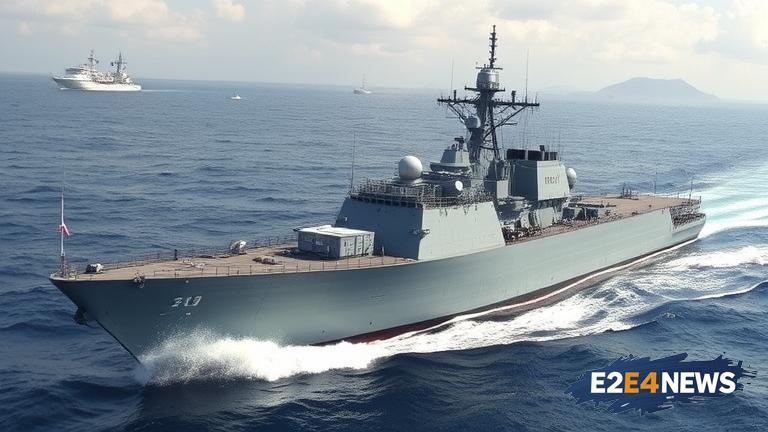In a move that underscores the growing strategic partnership between Australia and Japan, the Australian government has announced its decision to adopt a Japanese frigate design for its naval modernization program. This development is seen as a major boost to the country’s defense capabilities, as it seeks to enhance its maritime security in the face of rising regional tensions. The selected design, which is based on the Japanese Maritime Self-Defense Force’s (JMSDF) Mogami-class frigate, is expected to provide the Royal Australian Navy (RAN) with a state-of-the-art warship that can effectively counter emerging threats. The Mogami-class frigate is a highly advanced vessel, equipped with cutting-edge technology and weaponry, including advanced radar systems, missile defense capabilities, and a robust electronic warfare suite. The Australian variant of the frigate will be tailored to meet the specific needs of the RAN, with modifications to accommodate the country’s unique operational requirements. The decision to choose the Japanese design is a testament to the strong bilateral relationship between Australia and Japan, which has been strengthened in recent years through a series of high-level diplomatic engagements and joint military exercises. The partnership is seen as a key component of the regional security architecture, as both countries seek to promote stability and prosperity in the Indo-Pacific region. The Australian government’s decision is also expected to have significant economic benefits, with the local shipbuilding industry set to receive a major boost from the construction of the new frigates. The project is anticipated to create thousands of jobs and generate substantial revenue for Australian businesses, particularly in the states of South Australia and Western Australia. The construction of the frigates will be undertaken by a consortium of Australian and Japanese companies, with the Japanese firm Mitsubishi Heavy Industries (MHI) playing a leading role in the project. MHI has a long history of collaboration with the Australian shipbuilding industry, having previously worked on several high-profile projects, including the construction of the RAN’s Air Warfare Destroyers. The new frigates will be built at the Osborne Naval Shipyard in South Australia, which has undergone significant upgrades in recent years to accommodate the construction of advanced warships. The Australian government has committed to investing heavily in the project, with a total budget of AUD 45 billion allocated for the construction of the new frigates. The project is expected to take several years to complete, with the first frigate scheduled to enter service in the late 2020s. The introduction of the new frigates will mark a significant milestone in the modernization of the RAN, which has been undergoing a major transformation in recent years. The RAN has been seeking to enhance its capabilities to counter emerging threats, including the growing presence of Chinese naval vessels in the region. The new frigates will provide the RAN with a highly advanced capability, enabling it to effectively contribute to regional security efforts and promote stability in the Indo-Pacific. The decision to choose the Japanese design has been welcomed by defense analysts, who see it as a major boost to the RAN’s capabilities. The move is also expected to strengthen the strategic partnership between Australia and Japan, which has been growing in recent years. The partnership is seen as a key component of the regional security architecture, as both countries seek to promote stability and prosperity in the Indo-Pacific region. The Australian government’s decision is a testament to the country’s commitment to regional security, and its willingness to invest in advanced military capabilities to protect its interests. The project is expected to have significant implications for the regional security landscape, as it will provide the RAN with a highly advanced capability to counter emerging threats. The introduction of the new frigates will also mark a significant milestone in the development of the Australian shipbuilding industry, which has been undergoing a major transformation in recent years.





